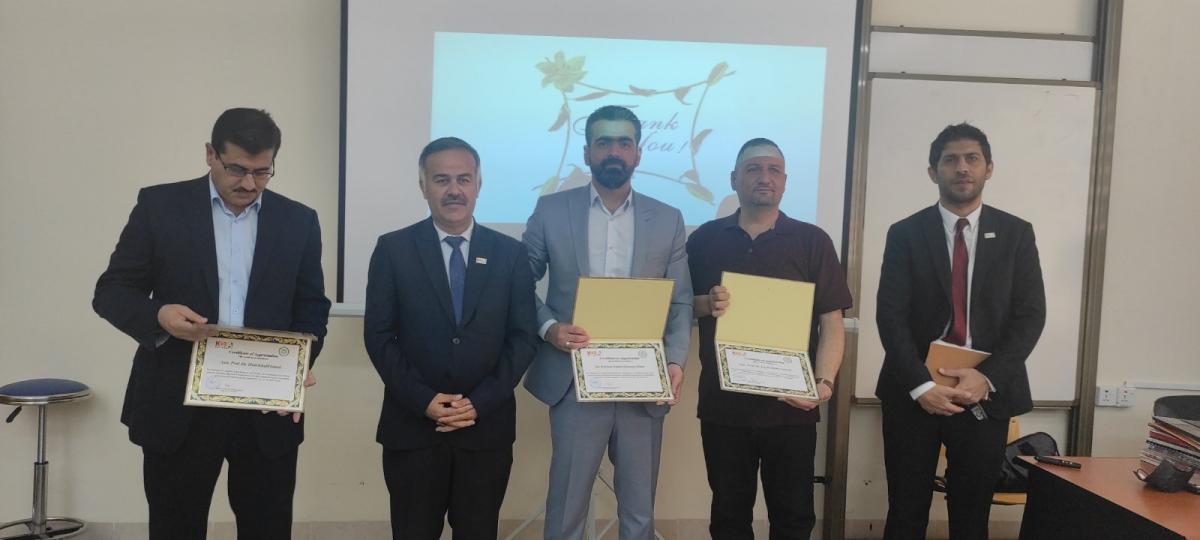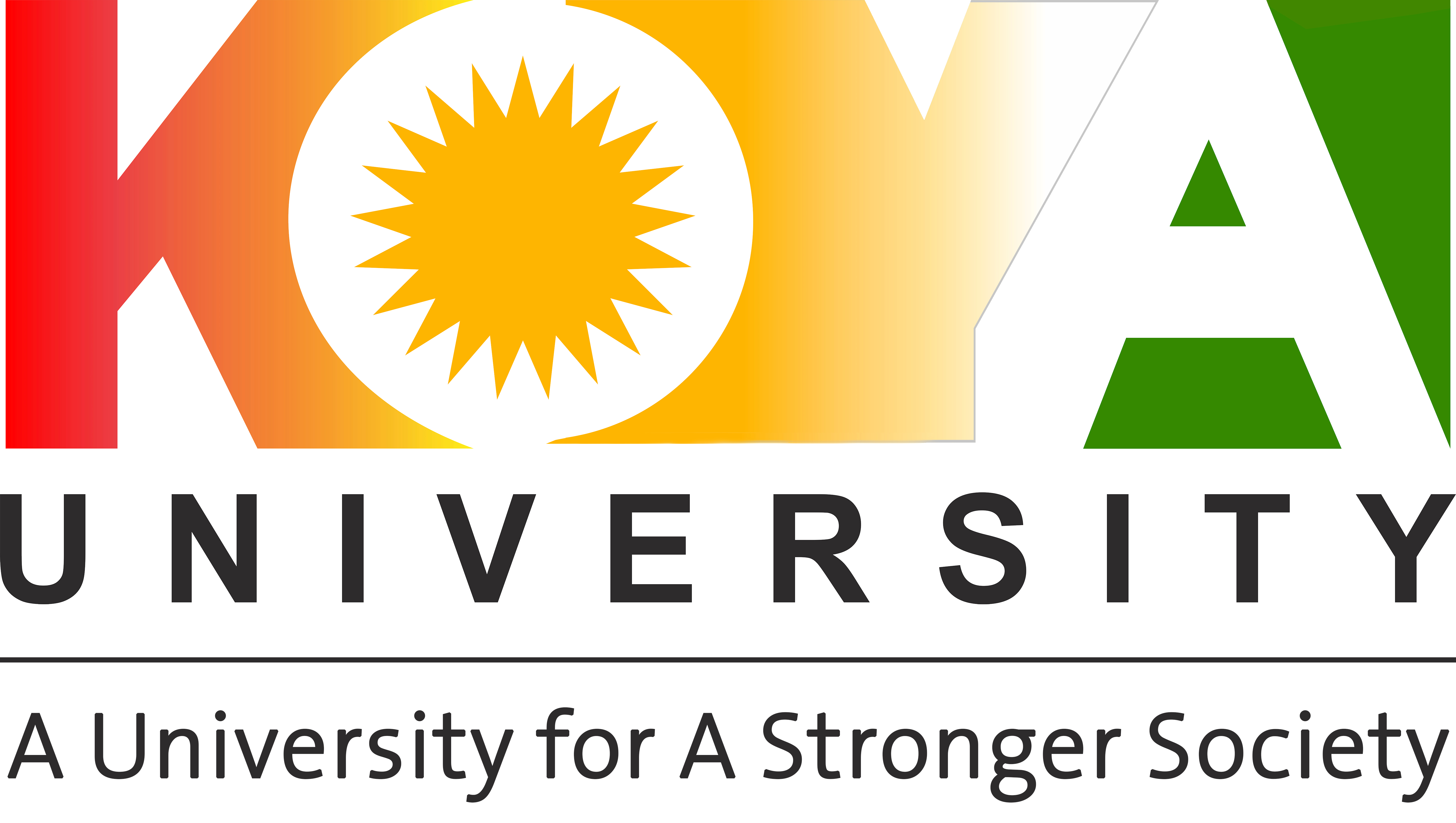Deep eutectic solvents workshop was held on 17th of April 2022 in Science and Health Research Center at Koya University in the presence of the Dean of the FSCH ‘Asst. Prof. Dr. Taha Jalal Omar’ and the vice dean ‘Mr. Hawkar Jaafar Hamad Ameen’ focused on the use of Deep eutectic solvents (DESs).
These solvents are one of the most popular green solvents that are mostly non-toxic, recyclable, non-flammable, and have low vapor pressures. DESs have interesting characteristics, such as low volatility, wide liquid range, biocompatibility, low cost, lower toxicity, higher biodegradability, and can be prepared easily. DESs are prepared from combination of various different hydrogen bond acceptors (HBAs) and hydrogen bond donors (HBDs) and forming homogenous stable liquid at room temperature.
DESs are highly advantageous in economic, practical, and environmental terms for the creation of innovative materials, and are used as valuable alternatives to overcome the limitations of conventional solvents, and even ionic liquids. Besides, these solvents have proved to offer tremendous opportunities and have opened new perspectives to produce novel and refined materials.
At the end of this event, the Dean of the faculty ‘Asst. Prof. Dr. Taha Jalal Omar’ provided a certificate each to show his appreciation to the presenter’s hard work.
The workshop’s details
Title: Applications of conducting polymers nanocomposites for water purification and in electrochemical aspects
Name of Presenters: Assist. Prof. Dr. Hani Khalil Ismail, Asst. Prof. Dr. Layth Imad Abd Ali, and Dr. Karzan Abdul Kareem
Number of participants: 30 academic staff
Date: 17/4/2022
Location: Health and Science Research Center
The Programme of the workshop
17th of April
Presenter 1: Assist. Prof. Dr. Hani Khalil Ismail
Title: Applications of conducting polymers nanocomposites for water purification and in electrochemical aspects
Conducting polymers are organic materials such as polyaniline, polypyrrole, poly (3,4-ethylenedioxythiophene) and, polythiophene, have attracted considerable attention in the last few decades due to their wide range of applications such as photovoltaics, conducting textiles, supercapacitors, electrochromic display devices, energy storage, electrocatalysis, biosensors and gas sensors, corrosion protection and environmental applications. They can be easily synthesised from their monomers by electrochemical or chemical polymerisation from aqueous solution, ionic liquids and deep eutectic solvents. In this presentation, several different conducting polymers modified with/without metal oxides, graphene oxide and graphite materials have been presented in various deep eutectic solvents (DESs) and aqueous media using different polymerisation techniques for removal organic dyes from aqueous solutions and electrochemical aspects (include detection heavy metals as sensor electrode and in supercapacitors and battery applications). The synthesised modified conducting polymers were characterised using several techniques such as UV–Vis spectroscopy, Fourier transform infrared spectroscopy (FTIR), thermogravimetric analysis (TGA), X-ray diffraction (XRD), transmission electron microscopy (TEM), scanning electron microscopy (SEM) and Brunauer–Emmett–Teller, zeta potential, conductivity measurements, square wave voltammetry (SWV), and cyclic voltammetry (CV). The results showed polymers composite can be effectively applied and reused as an inexpensive adsorbent material for removal of dyes from water, thus, for the detection of heavy metals (Cd(II) and Pb(II) ions) and can be also used as a cathode in wet rechargeable batteries using DES as electrolyte.
Presenter 2: Dr. Karzan Abdul Kareem
Title: Classification of DESs
Deep eutectic solvents are classified into five categories depending on the nature of the complexing agent used. Type I DESs are composed of quaternary ammonium salt and metal chloride, Type II are composed of quaternary ammonium salt and metal chloride hydrate, Type III are composed of quaternary ammonium salt and hydrogen bond donor (HBD) and Type IV are composed of metal chloride and HBD, Type V are composed of non-ionic of HBA and HBD. To understanding of physiochemical characteristics of DESs is important for its industrial applications. The key properties of DESs are freezing point, density, viscosity, surface tension, refractive index, and conductivity.
Presenter 3: Asst. Prof. Dr. Layth Imad Abd Ali
Title: Magnetic Nanoparticles (MNPs) as an effective tool for wastewater treatment
The use of magnetic nanoparticles (MNPs) has emerged as an effective tool for wastewater treatment due to its intrinsic properties including size, surface effect, quantitative effect, etc. sources. The workshop aimed to evaluate the use of MNPs in the removal of organic and inorganic pollutants from wastewater. Insights on different synthesis methods and their effects on pollutant removal were also presented. It was presented that MNPs provide targeted specificity and cost-effectiveness compared to conventional treatment approaches.

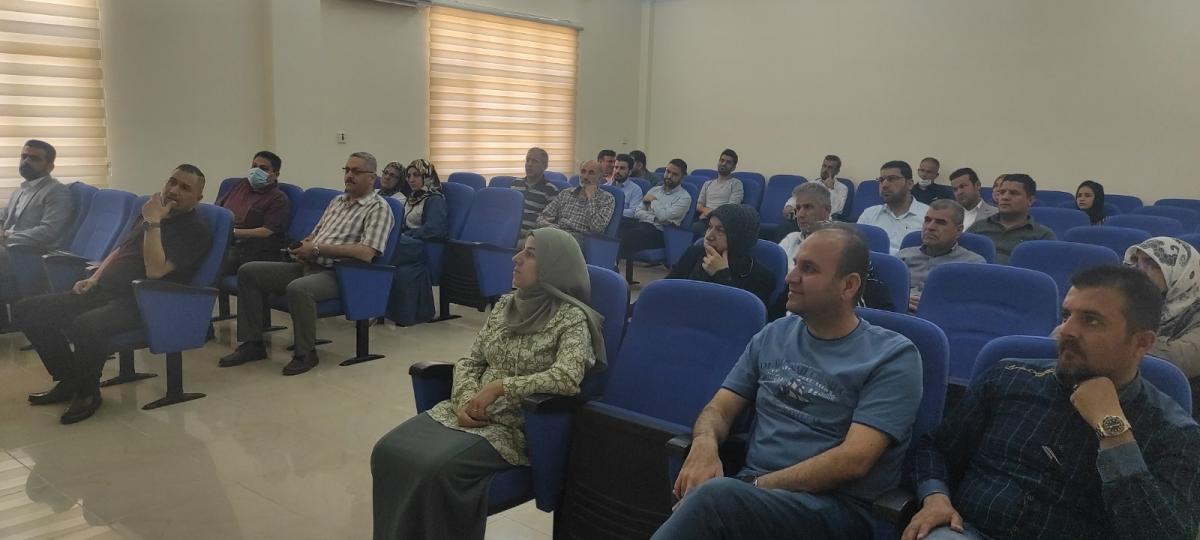
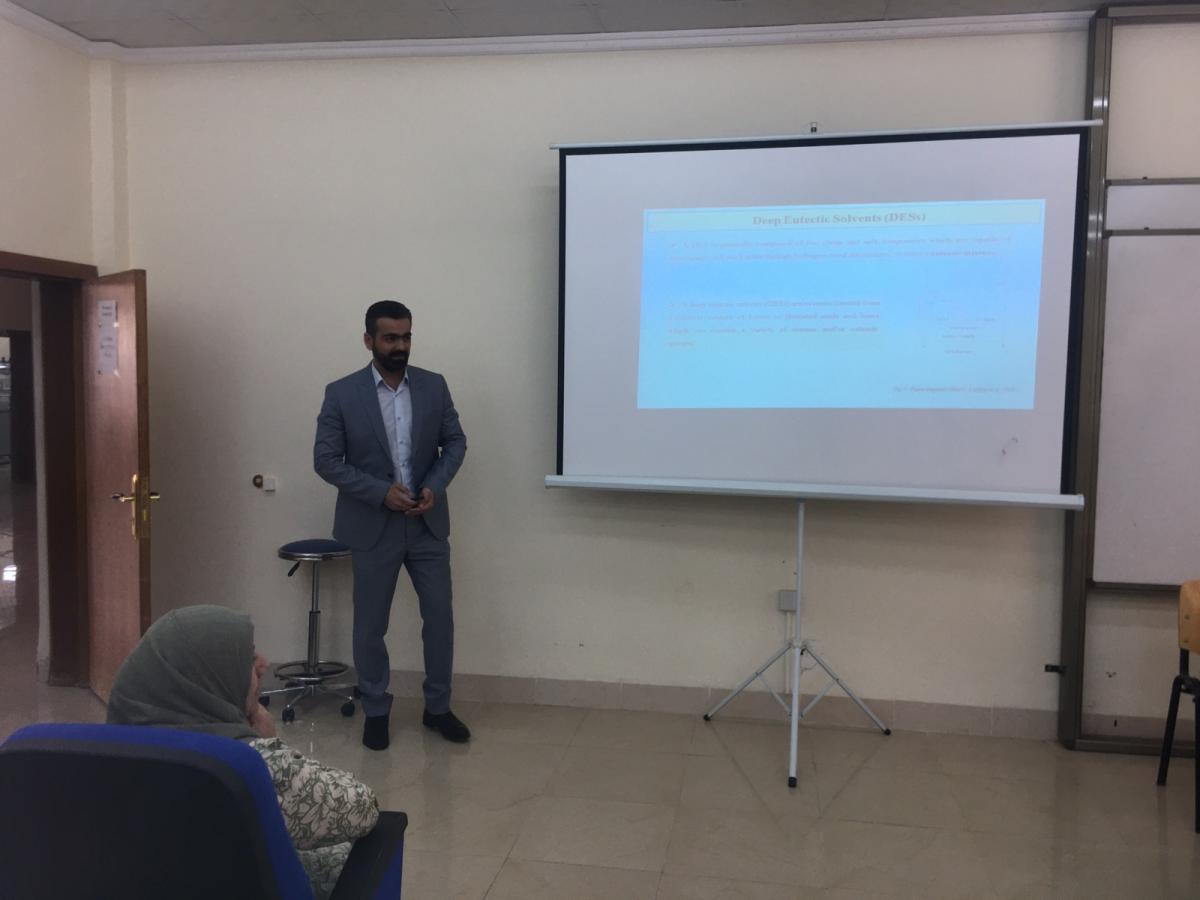
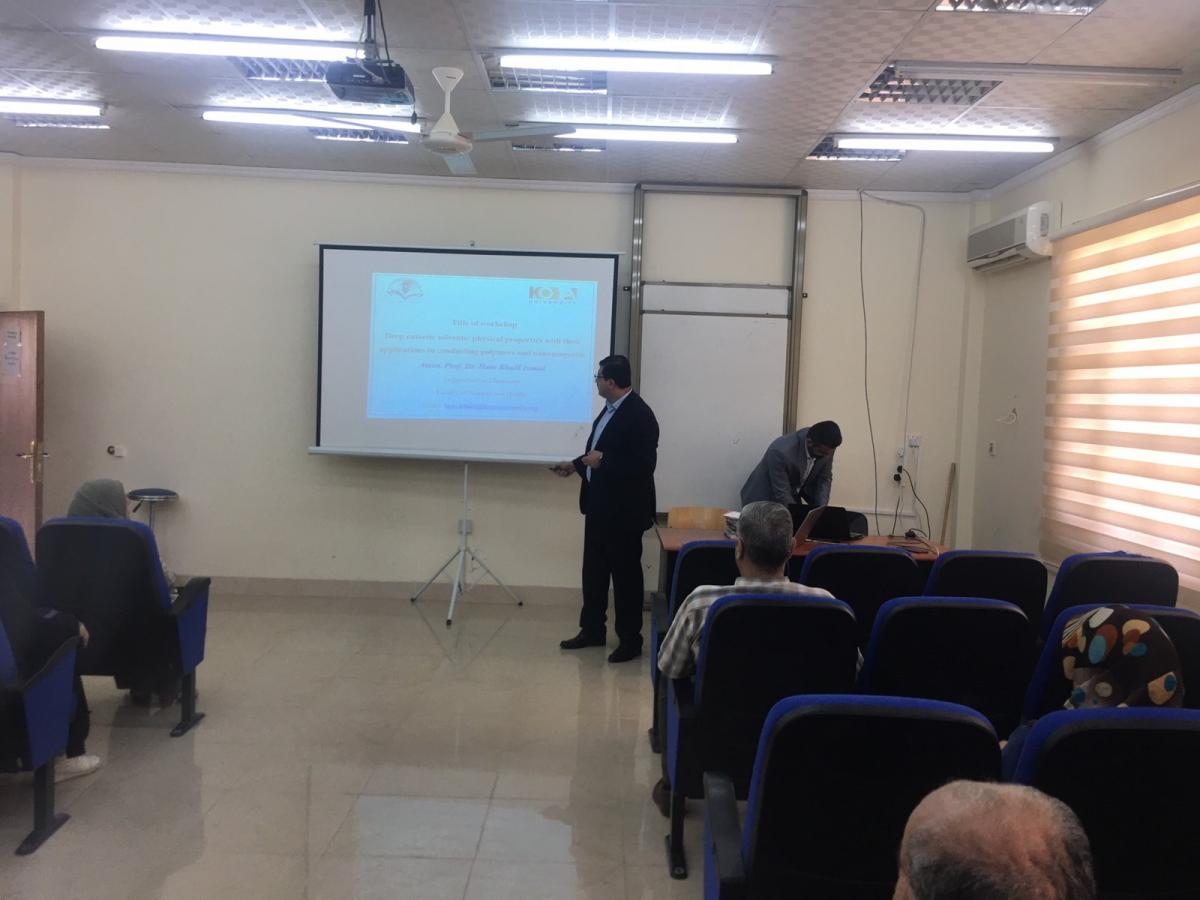
-----
Koya University (KOU) is located in the city of Koya (Koy Sanjaq) which is 1.0 hr drive to the East of the Kurdistan Region capital Erbil (Arbil, Hewlér) in Kurdistan Region of F.R. Iraq. It is on the foothills of beautiful high mountain. Its campus has been carefully laid out to embrace the beautiful mountainous nature. . There are 4 Faculties and 2 Schools in KOU; Faculty of Engineering (FENG), Faculty of Science and Health (FSCH), Faculty of Education (FEDU), Faculty of Humanities and Social Silences (FHSS), Shcool of Physical Education (SPHE) and School of Medicine (SMED). Also, there are two research centers; Genome Center and Malai Gawra Center. Moreover, at KOU there is an English Language Center (BELC) at KOU has been opened with the sponsorship of IREX and American embassy in Baghdad as well as with the support of Spring International Language Center of The University of Arkansas. KOU has two Scientific Journals; ARO-The Scientific Journal of Koya University, which is indexed by Clarivate Analytics (ESCI), and Koya University Journal of Humanities and Social Sciences (KUJHSS). KOU is a proactive member of Erasmus/ Marhaba Project and Erasmus+. KOU signed many Memorandum of Understandings (MoU) with many International Universities, e.g., The University of Arkansas (June 2015). The Lulea University in Sweden (April 2014), The University of Nottingham in the UK, The University of Buckingham in the UK (Oct 2008), Belkin University in Turkey (Sep 2009) The University of Greenwich in the UK, Cihan University-Erbil (2021) and Tishk International University (2021). Koya University is a memebr of The Association of Arab Universities and the International Association of Universities.
Arabic Wikipedia | Turkish Wikipedia Iraq | Tukish Wikipedia KRG | Persian Wikipedia | Wikipedia Kurdistan | University of hawai
قائمة جامعات العراق | كردستان العراق
